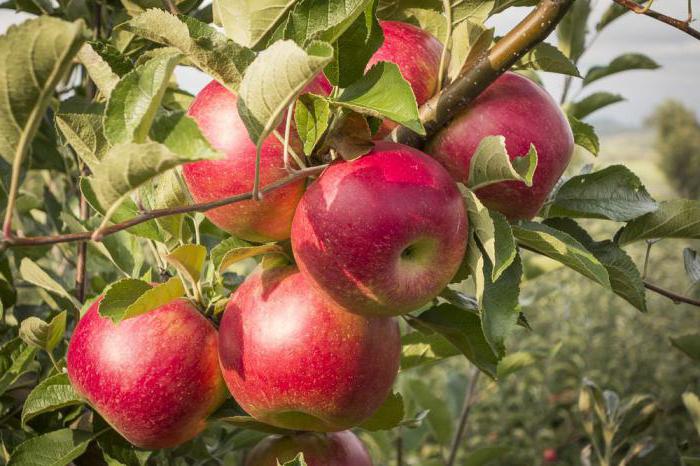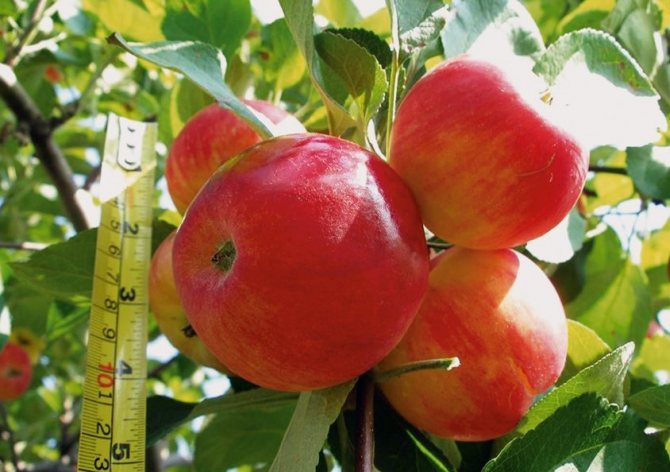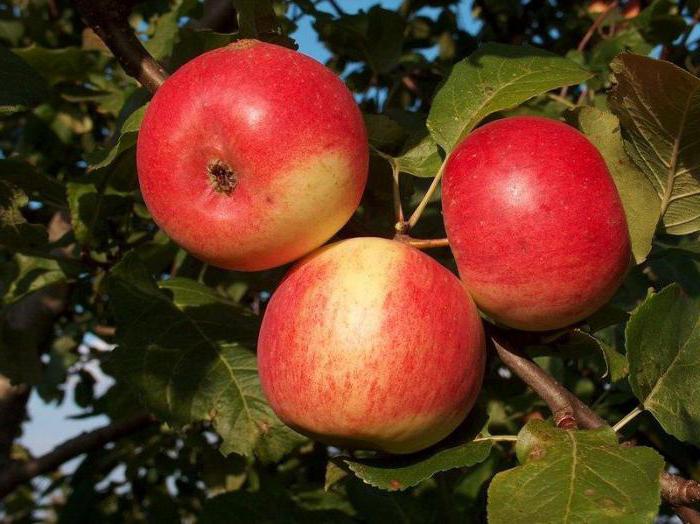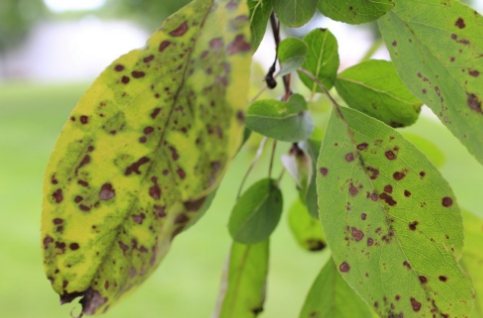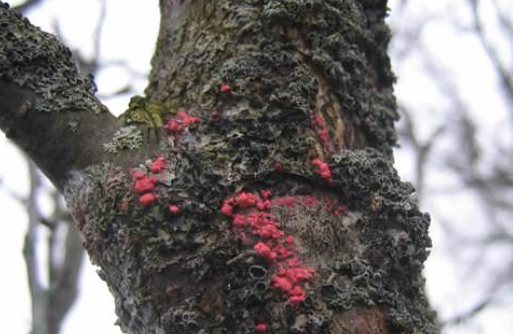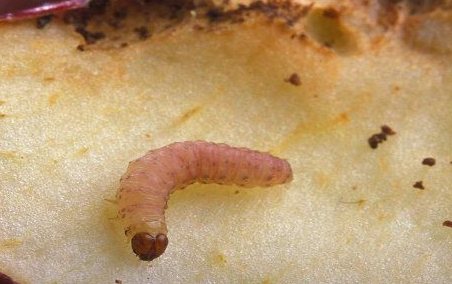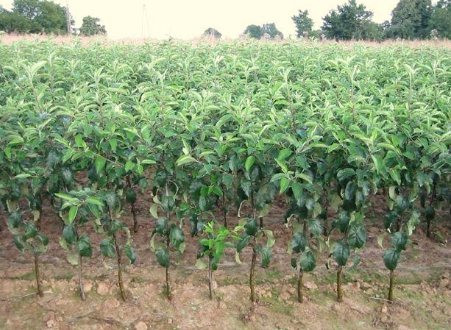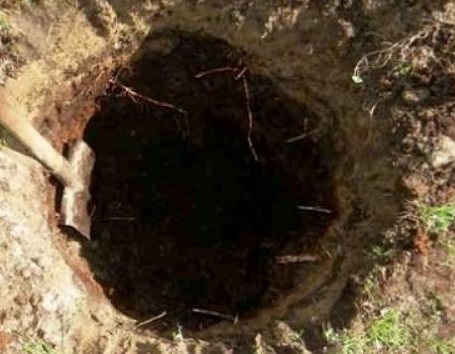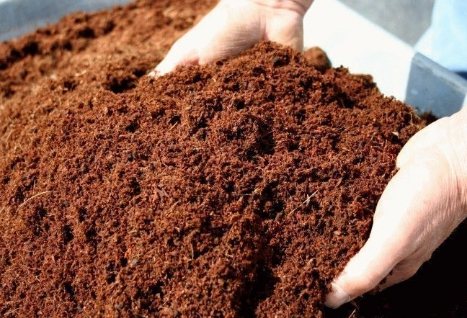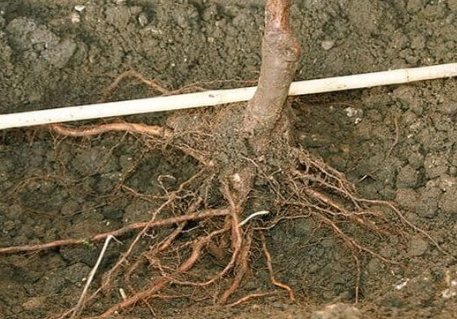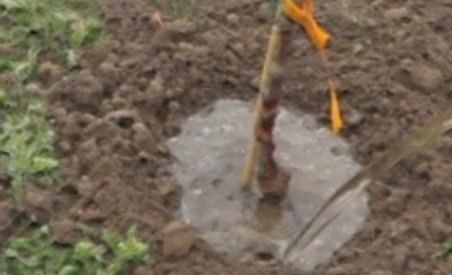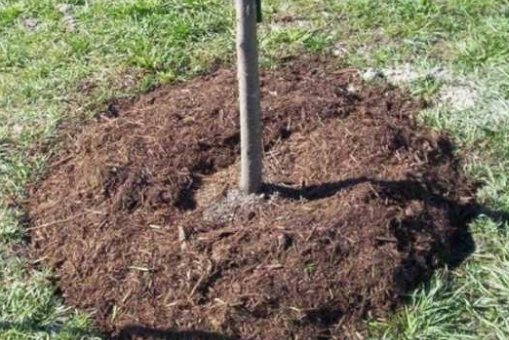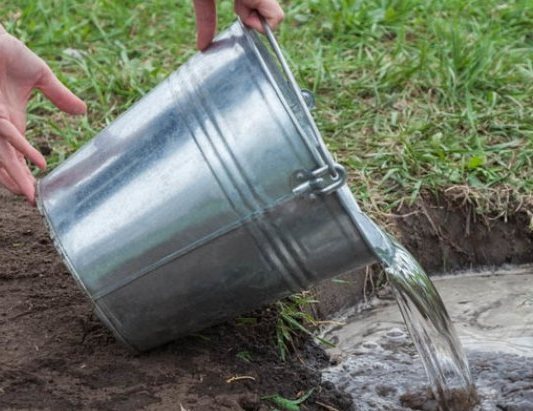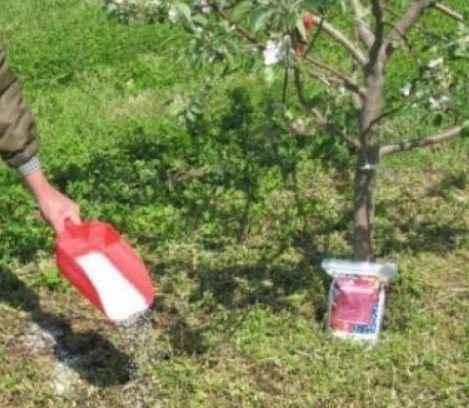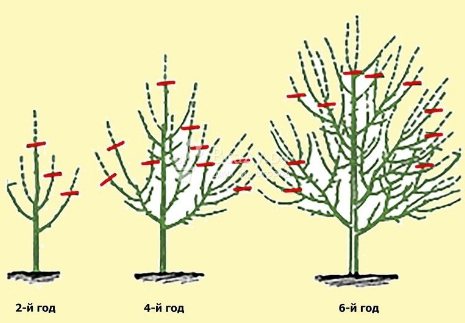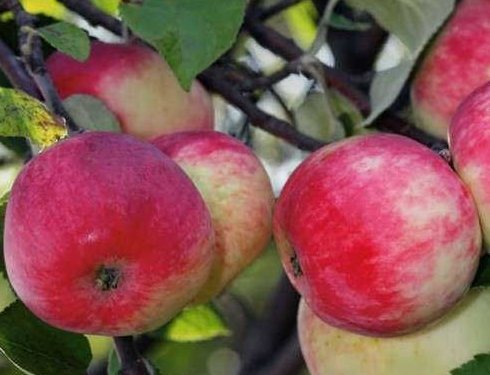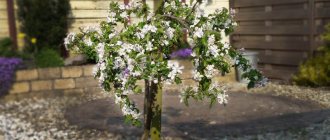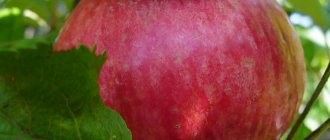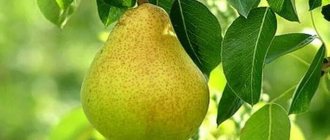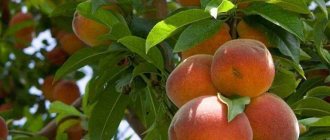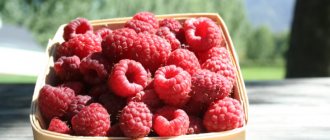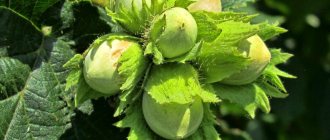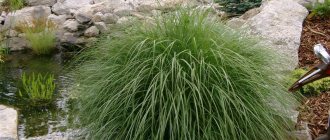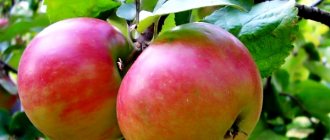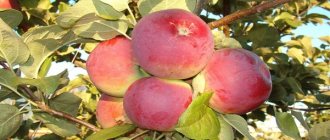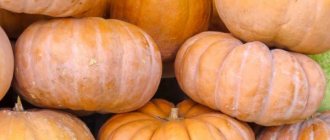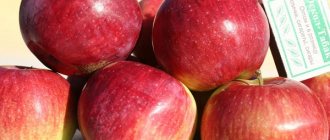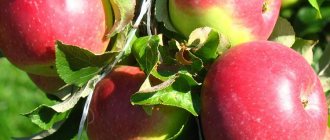Apple Tree Silver Hoof refers to summer varieties and is the most popular among gardeners.
In the early 90s of the twentieth century, this variety was zoned into the West Siberian regions.
Very often, this apple tree is found in the northern regions of Kazakhstan and Udmurtia, in the Kirov, Chelyabinsk and Perm regions.
The apple variety Serebryannoe Hoof is quite winter-hardy, thanks to which it is appreciated in the northern regions.
For novice gardeners, in order to avoid mistakes when growing, you should familiarize yourself with this variety in more detail.
Description
This culture was bred in the Yekaterinburg nursery breeders Kotov L.A. when crossing apple trees Rainbow and Snowflake.
Tracing the stages of the genealogy of the form, it can be revealed that this variety originated from many crosses of the Russian Siberian berry apple tree with large varieties of apple trees from the northern strip.
The variety is quite winter hardy, with early fruiting.... Not very whimsical to weather conditions, it has tasty fruits.
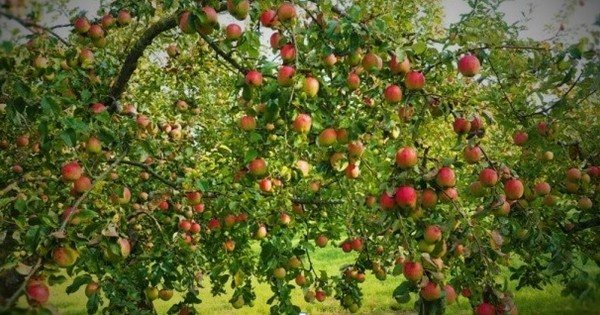
Fruiting of the Silver Hoof apple tree.
How to choose the right apple seedlings when buying
To grow a strong, productive tree, the quality of the planting material is very important. If you want to be one hundred percent sure of the "purity" of the variety and the good quality of the seedling, it is best to buy it in a nursery. In addition, the tree should have a label with the name of the variety, company and its coordinates.
When choosing a tree, you need to pay special attention to the condition of the roots and foliage. The root system should be well developed, branched, and the roots should look alive. The roots should not show signs of damage, root rot, cancer and other diseases.
You should not buy seedlings with weak, dry, drooping roots.
Important! When examining the root system, pay attention to whether the roots are trapped by earthy clumps. If the ground does not hold on to them, then the roots are weak or painful.
You also need to inspect the sheet plate from above and below. It should be dense, rich in color, without holes, plaque and other signs of disease or pest damage.
The leaves of the Silver Hoof apple tree are matte, light green. The presence of a glossy shine, white bloom, black dots indicates that the seedling is affected by fungal diseases or aphids. Be sure to look under the foliage - aphids may be hiding there. Do not buy seedlings with dry, curled, drooping foliage.
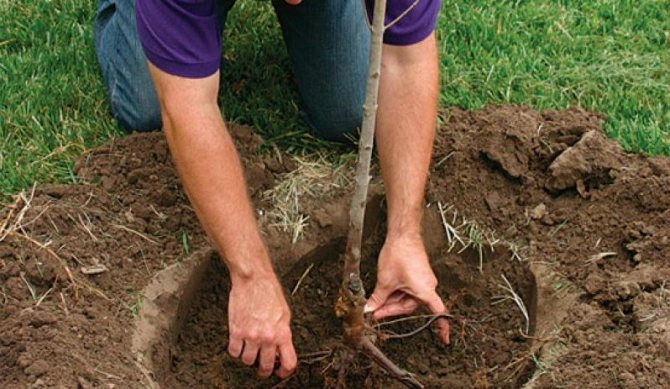

additional characteristics
Silver hoof - summer, very productive apple variety.
This fruit crop differs the following advantages:
- Frost resistance;
- Drought resistance;
- Storage of fruits up to 2 months.
The disadvantages of this variety include:
- With poor care, the fruits become smaller;
- Affected by scab;
- Fruit rot is allowed.
Attention! The silver hoof requires regular grooming.
Tree height
Apple Tree Silver Hoof slightly below or of medium height.
The height of the tree reaches no more than 3-4 meters.
Crown width
- Crohn in fruit crops thick and rounded.
- Skeletal branches: Straight,
- They are compact and grow at a 90 degree angle to the base of the trunk.
- Short-pointed,
Yield
The variety has high stable yield.
The tree produces the same number of fruits every year.
Apples have an average weight of about 85 grams... The yield per tree reaches 160 kg.
Important! In case of violation of agricultural technology, the yield of the apple tree falls.
Self-fertility
The Silver Hoof is a self-fertile culture. For fruit ovary, it needs pollination of other varieties of apple trees.
Tasting assessment
The flesh of apples is of a fine-grained consistency, quite firm and juicy. They have aromatic and rich sweet and sour taste. Apples contain: sucrose, ascorbic acid, P - active substances and titratable acids.
Winter hardiness
The variety is considered winter hardy. Thanks to this, the fruit crop grows well in a continental climate.
Disease resistance
The apple tree is moderately disease resistant. Often there are cases of scab and diseases of microorganisms of fungal origin.
Photo
Chemical composition:
- Sugar - 12.8%;
- Titrated compounds - 0.9%;
- Dry soluble substances - about 15%;
- Ascorbic acid - 12.5 mg per 100 grams;
- P-active substances - 112 mg per 100 grams.
Testimonials
Altai region. Pozdnyaeva R.I .: “The state farm where we live collapsed back in the 90s. We had a rich orchard with various varieties of apple, pear, plum and other crops, which had to be harvested in Soviet times. For many years this garden has been abandoned, many fruit crops have lost their fruiting and stand like ordinary trees.
My husband and I come to this garden every year to pick apples and sea buckthorn. I would like to highlight the apple variety Silver Hoof.
I am not a gardener and I do not know how this apple tree should bear fruit, but we from year to year we harvest from this tree.
I will not say that the apple tree has many fruits, but they are delicious both fresh and preserved.
Keeping apples is quite long, begin to deteriorate only 1.5 months after collection. Apples are also very good in dried form, I add them to baked goods in winter and cook a very tasty compote. "
Maximov. D. Kiev: "Hello! I am a beginner gardener, I have been mastering this science for about 6 years. And here's what I can tell from initial experience. Everyone praises the Silver Hoof apple variety, but I refute this opinion. I bought a seedling not in some market, but in a breeding instituteby looking at the photo and description of the variety. And now I have been waiting for the fruiting of this apple tree for 6 years already. The apple tree bloomed for the first time last year, there were no fruit ovaries. This year it bloomed again and again the fruits did not set, although pollinators grow nearby.
Constantly exposed to diseases and pests. I trim using technology. It tolerates winter well. If next year I don't get the fruit again, the apple tree will have to be cut down. "
Maksaev. M.I. Sterlitamak: “I love my country garden, where only apple trees grow. For over 15 years I have been cultivating this crop. It grows on my site about 20 different varieties, such as:
- Persian,
- Gornoaltaiskoe,
- Uralets,
- Silver hoof, etc.
They were planted with me in a checkerboard pattern, at a distance of 5 meters. From the beginning of spring to autumn, you have to spend a lot of time in the country house, since some varieties of apple trees are demanding to care for.
Although Silver Hoof is one of these varieties, I really fell in love with the apple tree from the moment I looked at the description and photo before buying a seedling.
There were never any problems with flowering and laying fruits. The growth of the apple tree is average. Annual fruiting... I am satisfied with the qualities of the fruits. It tolerates the winter period quite well. In spring, there are very few dead branches. "
Diseases and pests
| Scab Signs: Dark spots appear on the leaves.Over time, they also affect the fruit. Prevention and control: spring treatment with Topaz. After flowering, trees are sprayed with a solution of colloidal sulfur (80 g per bucket of water) |
| Cytosporosis Signs: Ulcers appear on the trunk and branches. Over time, a red bloom appears on them, as in the photo. Prevention and control: top dressing with potassium and phosphorus for the winter, whitewashing in spring and autumn. Treatment with Hom before and after flowering |
| Moth Signs: caterpillars infect fruits, they are affected by fruit rot, they fall off immature. Prevention and control: collecting volunteers, eating all damaged apples. Treatment of the plant with Karbofos |
Features of planting and care
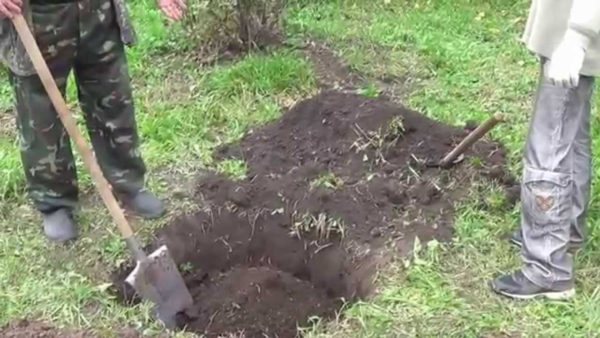

Planting the Silver Hoof apple tree.
The first yield and its stability depend on the correct planting and care of the plant.
Landing
Timing
The apple tree can be planted for three seasons:
- In the spring, in April,
- In summer, at the end of July,
- In the autumn, at the beginning of October.
However, gardeners still recommend planting in the fall.
A place
The plant prefers light, loose soil... The planting site should be well lit and free of groundwater.
Technology
For planting, they dig a hole 60 cm deep and about 70 cm in diameter.
Add to the bottom of the pit:
- 4 kg of humus,
- 40 gr. superphosphate,
- 20 gr. urea and potassium.
- Then soil is poured onto the fertilizer, a tubercle is formed and a seedling is placed on it.
Tree attached to a peg and carefully sprinkle with earth. After planting, the seedling is watered abundantly until the water is absorbed into the soil.
Important! When planting a seedling contact of rhizomes and fertilizers is not allowed, otherwise the tree may get burned.
Agrotechnics
Treat the tree with fungicides and insecticides several times a season:
- Before the leaves begin to form,
- Then on green mass and before flowering.
Fruit crops need abundant watering during drought and during fruit ripening.
Organic material is carried out trunk circle mulching.
Feed apple tree with nitrogen, potash and phosphorus fertilizers.
Pruning and shaping the crown
The yield depends on how the excess branches are cut and the crown is formed.
The first pruning is done in the early spring of the following year after planting. The branches are cut to the maximum, leaving the trunk open.
In subsequent years, preventive pruning is carried out and do not allow overgrowing of the lower tiers of the apple tree.
In Siberia
To obtain a bountiful and large harvest of the Silver Hoof in Siberia cultivar grown in shale form.
Whereby the branches are under the snow and are not damaged by frost.
Pollinator varieties
Pollinators for apple trees different varieties of this culture will serve, the most important thing is that they bloom and bear fruit in one period.
Although gardeners considerthat the best variety for pollination is the apple tree Anis Sverdlovsky.
Top dressing in autumn
Autumn apple tree fed with rotted manure or compost.
They are added to the soil and, together with the ground, are carefully huddled near the trunk circle. Fresh organic matter is not used, as it can burn the roots of the plant.
Transfer
The transplant is carried out in the fall a month before frost. The apple tree should be dormant after all the foliage has fallen off.
Advice! If you are replanting a tree with foliage, the work process must be carried out in the evening.
Reproduction methods
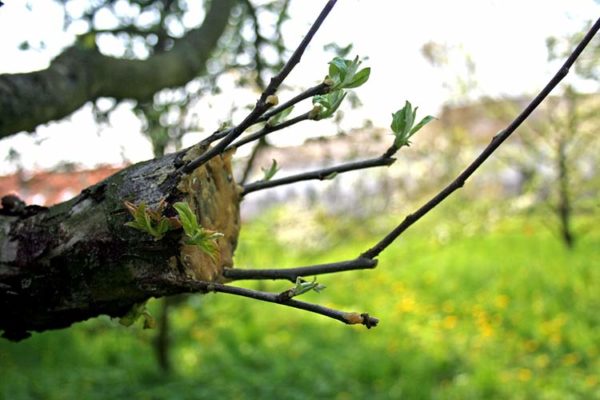

Apple tree (grafting by cuttings).
Variety Silver Hoof Can reproduce in different ways:
- By grafting a cutting;
- Kidney vaccination;
- Rooting cuttings;
- Seeds.
This variety also appreciated by breeders due to the fact that he participates in the breeding of new elite varieties when crossing.
Water abundantly after planting
| Stage 1. Buy a quality seedling Choose a tree by its appearance... Assess the condition of stems, leaves and root system.It is best to buy from a nursery where the seedling will be dug up in front of your eyes. Purchase a pollinator... Without it, the tree will not bear fruit |
| Stage 2. Prepare the landing site Find a well-lit area with light, fertile soil... Observe the indents: from the fence at least 2 m, from other trees or buildings from 4 meters or more. Dig a hole 60 cm deep... Diameter can be the same or slightly larger |
| Step 3. Put the nutrient mixture into the planting pit Mix humus and ash in a ratio of 1:10... Add a mineral complex for fruit trees. Fill 2-3 buckets into the pit... Tamp down the surface and spill with water |
| Step 4. Plant a tree Position the plant so that the root collar is above ground level... Align vertically, gently straighten the roots if the root system is open. Cover with soil and compact the surface... Make a recess or a side around the trunk so that water does not spread during watering |
| Step 5. Water the seedling Use warm water... It is advisable to defend it for a day. Best watered in the morning or evening. Consumption rate - 2-3 buckets per tree. Pour in as moisture is absorbed into the surface. Loosen the soil after work |
Features of ripening and fruiting
The beginning of fruiting
First fruiting the apple tree begins 3 years after planting.
Higher quality fruits with high rates are observed two years after the first fruiting.
Timing
Flowering
Flowering period The silver hoof falls in early May.
The tree has white flowers, with medium and large sizes.
The shape of the petals is semi-closed.
Fruit ripening
The ripening period of fruits in the Sverdlovsk region is at the end of August.
In the western and eastern regions located from the Urals, the fruits ripen much earlier.
If the fruits are not removed in August, in September they become translucent.
Features of the
The Silver Hoof variety fruiting features are as follows:
- Early fruiting;
- Crop stability;
- Very good taste;
- Presentation of apples;
- Long-term storage of fruits.
Important! During transportation, the fruits do not lose their appearance. After 2 months of storage, the fruits remain juicy and tasty.
What if the apple tree does not bloom or bear fruit?
Novice gardeners make mistakes when planting and processing an apple tree, which ultimately leads to the fact that the tree does not bloom and does not bear fruit.
Flowers on the tree are not tied for the following reason:
- Early term - the tree may not have reached fruiting age.
- With improper crown processing, when fruit branches are cut by mistake.
- The color of the apple tree stops in the presence of the flower beetle pest.
If, nevertheless, the apple tree blooms profusely, but no fruits are formed on it, the following factors should be considered:
- With inaccurate harvesting, short branches - fruits - break.
- Freezing temperatures during apple blossom will reduce fruit development.
- Lack of pollinator varieties for the plant or the wrong choice.
If these nuances are observed, the apple trees will begin to bear fruit on time.
Feed the apple tree
| Stage 1. Process the near-trunk circle Loosen the surface around the trunk every month... Depth - no more than 10 cm, remove grass and weeds. Mulch with humus or peat... To make a layer of about 5 cm, it serves as both protection and additional nutrition |
| Step 2. Water as needed Carry out work if there is no rain for 2 weeks or more... Use warm, settled water. Water in the evening after sunset... Use 3 to 10 buckets for each tree, depending on the size of the plant and the degree of dryness of the soil |
| Stage 3. Apply top dressing Use a mineral complex for fruit crops in the spring... Spread it evenly around the trunk circle, and then dig up the soil to a shallow depth. Apply organics in the fall... Apply after the leaves fall, loosen the surface so that the nutrients reach the roots faster |
| Step 4. Trim the crown Form an apple tree in the early years according to the scheme in the photo... It is important to initially set the correct shape of the crown, so that later the tree is even and not thickened. Cut off broken and damaged shoots in spring... Prune further as necessary, removing all branches thickening the crown |
| Stage 5. Harvest on time Collect apples for storage unripe... Remove them carefully and put them in boxes. Store in a cool, dark place. For immediate use, ripen... They hold well and do not fall off even when ripe. |
Growing in regions
Moscow suburbs
The climate in the Moscow region has the following characteristics:
- The harshness of winter
- Dry summer
- Short vegetative period of plants.
Not every variety will take root in these conditions with annual, stable fruiting. Thanks to repeated breeding, the Silver Hoof variety not only takes root in these weather conditions, but also yields a crop with enhanced consumer qualities.
Important! During periods of drought, regular watering is required.
Ural
Highly popular variety for the Urals - early silver hoof apple tree. A tree with a well-formed crown, with medium vigor.
The advantages of this variety are:
- Winter hardiness,
- Early fruiting,
- High yield of fruits.
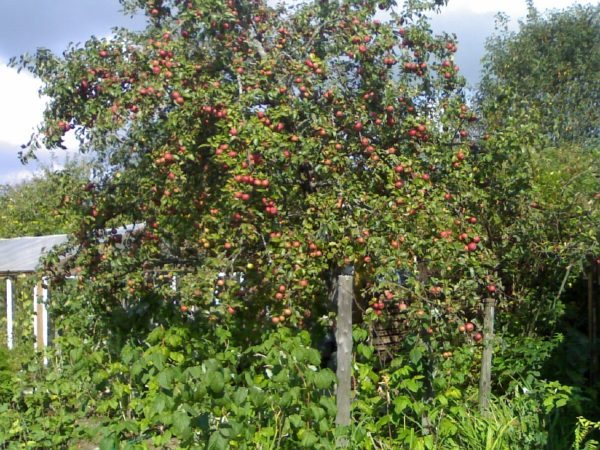

Apple tree Silver hoof in the garden.
Volga region
For this region varieties of apple trees are needed with the following characteristics:
- Drought resistance,
- Winter hardiness,
- High yield,
- Stable fruiting.
Considering the quality of the variety, Silver Hoof is ideal for these characteristics. However, it should be borne in mind that apple trees in this region are most often exposed to powdery mildew and scab.
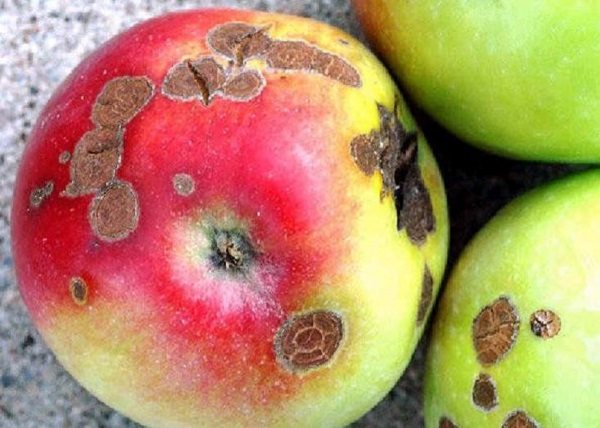

Apple scab.
Northwest
The weather in the North-West is unpredictable, frosts are abruptly replaced by warming. For this climate, gardeners are more careful in choosing apple varieties.
The variety should be early maturing and, at the same time, quite winter hardy.
Silver hoof grows well in this area for seed growing.
During growth and development the seedling requires careful care, otherwise frost and a sharp cold snap can have a detrimental effect on the plant.
Siberia
The Silver Hoof was bred by crossing:
- Early fruiting varieties Rainbow
- And the autumn variety Snowflake.
It's a mix of cultures good for Siberia.
When growing apple trees in this region should take into account frosts up to 50 degrees.
In such harsh weather, the upper branches can die. To avoid this, the tree is planted on a dwarf rootstock, or a shale-shaped crown is formed.
Collection and storage
The fruits of this variety have a short keeping quality - about 2-2.5 months. To preserve their marketability and taste, you need to put them in a dry container (wooden boxes or cardboard boxes) and place them in a basement or cellar. The main preservation conditions are the absence of sunlight, a humidity level of 90%, good ventilation and a temperature within 1-3 ° C.
Due to their dense surface, silver hoof apples are well tolerated for long-distance transportation.
How to harvest and store crops
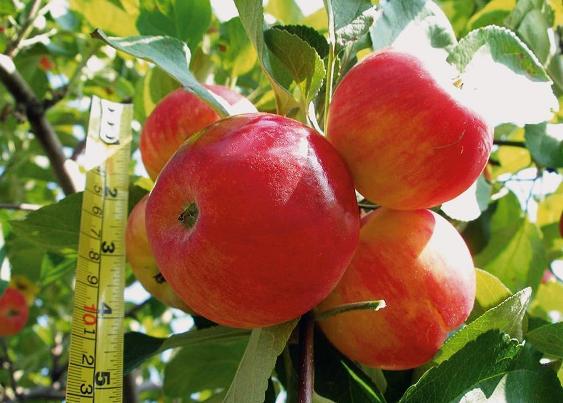

The harvest period for apples depends on the specific climatic conditions. This is usually mid-August. Fruits picked in time can be stored longer. If certain storage conditions are observed, they lie for more than 2 months.
For this, the room must have a high level of air humidity up to 90%. The temperature should not be higher than 0 ° C. Apples should be placed in a wooden container. Sort apples with signs of spoilage immediately.
Advantages and disadvantages
There are few disadvantages of the variety, we can refer to them:
- self-fertility and the need to plant pollinators in the garden;
- medium resistance to scab and fruit rot;
- the dependence of the size of the fruits and the yield of apple trees on the quality of agricultural practices.
The advantages more than cover these small disadvantages. The advantages of the variety can be considered:
- transportability;
- one-dimensionality of apples and good appearance;
- frost resistance;
- good fruit taste;
- early maturity;
- versatility of fruits;
- Trees of the Silver Hoof variety are excellent material for breeding work to obtain new varieties with summer ripening periods.
Follow-up care of the apple tree
One of the important points for getting a good harvest is the correct pruning of the apple tree. This is done in March-April, when frosts recede, but the buds are not swollen.
The first pruning is done the following spring after planting the tree:
- Leave a stem, 50 cm high and one trunk - a conductor, 30 cm long.
- The next year, branches are formed on the conductor, which will be skeletal.
- 3-4 branches are left, the first is at a height of 50 cm from the ground. Their ends are also trimmed.
- In subsequent years, a certain type of crown is formed, chosen by the gardener.
- Carry out sanitary pruning of wood. Removal of diseased and broken branches, shoots that grow inward and thicken the crown.
- Slices must be treated with garden varnish or other compounds.
- Young trees are watered. In dry years, this is done several times over the summer.
- Begin to water the apple tree during flowering. Further, watered in mid-summer during the ripening of the apples.
- It is important to do water-charging irrigation in the fall after harvesting. Mature trees do not require watering.
If the apple tree is planted according to all the rules, fertilization will not take several years. In the future, liquid fertilizing is performed along the perimeter of the crown:
- For this, a groove is made into which the nutrient solution is poured.
- A more reliable, but labor-intensive method is watering through pipes dug into the ground to a depth of 1 meter.
Shelter for the winter is required only for young apple seedlings:
- They are wrapped in matting, burlap, spruce branches, soft cardboard. Such protection will protect the tree from hares, mice and others.
- Before wintering, the trunks of adult apple trees are treated with whitewash with the addition of disinfectants.
Diseases and pests, methods of control and prevention
Diseases and pests
Apples are covered with ugly dark spots.
Sprinkling trees in spring with a solution of urea (500 g per 10 liters of water).
A gray spot appears on the fruit after ripening. Blown by the wind, damaging other fruits.
Removing rotten apples. Wood processing with preparations "Topsin", "Horus", "Azocene".

